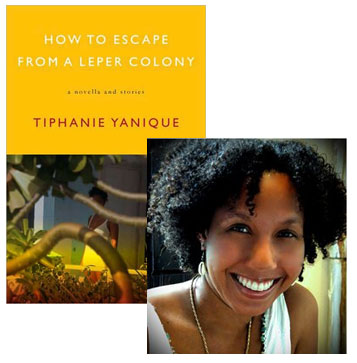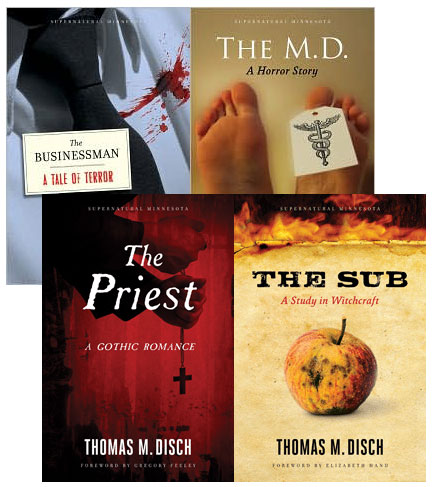Tiphanie Yanique: The Tone of “Near-Extinct Birds”

Tonight, Tiphanie Yanique will be honored by the National Book Foundation as one of the “5 Under 35,” their annual tribute to a select group of promising young writers. She’s being recognized for the strength of How to Escape a Leper Colony, a fantastic collection of short stories that have already earned her an award from the Rona Jaffe Foundation as well. The breadth of Yanique’s storytelling is quite impressive—be sure to read the novella “The International House of Coffins,” which takes one encounter between three people and spins it in three very different directions—and, as she explains in this guest essay, that’s a quality that she consciously strived for. Don’t just take my word for it, though: You can read the title story, which won the Boston Review fiction prize, and if you like that, pick up the book and try the rest.
I love Ben Fountain’s Brief Encounters with Che Guevera for many reasons, but in particular because of something his collection does that many collections just don’t do: range. Range is one of the things I think a story collection can do more easily than a novel, and yet it’s something that collections often refrain from attempting. When a collection does attempt range often reviewers and readers just don’t know what to do with it.
By range, I mean that each story in a collection attempts something different. Fountain’s title story is mostly realist, about an Ameircan kid working in furniture delivery. Another story, “Fantasy for Eleven Fingers,” about a piano savant with an extra finger, is filled with fancy. Some stories are from inside of a culture as with “Bouki and the Cocaine,” told from the perspective of Haitian fisherman, and others are from the outside looking in, as with “Rêve Haitien,” told from the perspective of an American expat in Haiti. The stories are set in the Caribbean, South America, North America, Asia, Europe and Africa. While most of the stories are from the male perspective, there are standouts from women characters. Most of the stories are third person and from a white American perspective, but not all. This range is something I attempt in How to Escape from a Leper Colony in part because Fountain’s collection allowed me to know it could be successful. I didn’t realize how perilous this might be.
15 November 2010 | selling shorts |
Read This: Thomas Disch’s Supernatural Minnesota

Last week, I had the opportunity to give Tor.com readers a “guided tour” of four horror novels by Thomas M. Disch, originally published between 1984 and 1999 and recently reissued by the University of Minnesota Press—starting with The Businessman: A Tale of Terror and making my way through The M.D.: A Horror Story, The Priest: A Gothic Romance, and The Sub: A Study in Witchcraft. The assignment (well, I volunteered, really) was a pleasure: These are four fantastic novels, very dark but also very funny, and it was interesting to see, reading them one right after the other, how they connected with each other… and to have additional input from Tor.com readers whose comments filled in things that I hadn’t noticed.
One of the aspects of this series that I came to appreciate is that it isn’t really a “series,” at least not in the sense I had expected. The “Supernatural Minnesota” label assigned to the four novels had initially given me the impression that Disch was setting his stories in something like the Castle Rock of Stephen King, with a coherent history spread out over multiple stories. But that’s not quite right: Yes, locations and characters overlap from one novel to another, but I came to realize that even if the same characters showed up in different stories, they weren’t necessarily the same people, even if they seemed awfully similar.
As I wrote in one of the reviews, instead of Castle Rock, it’s a bit more like the London of Michael Moorcock’s “Jerry Cornelius” stories, where the names and places are starting points, but the stories are likely to go off in very different directions. That’s why, when two secondary characters in The Businessman show up to play key secondary roles in The Priest, Disch doesn’t offer any follow-up to the storyline from the first novel. Yes, it would have been a nice in-joke for people who remembered The Businessman, but, heck, that was over a decade ago, and anyway the supernatural parameters he’d set for the first story didn’t jibe with the second one. So you accept Disch’s Minnesota as a consistent environment, but not a “shared world.” And the individual novels are, I think, stronger and more subtle in their workings for that.
You don’t have to take my word for it, though, and I heartily recommend that you buy and read The Businessman, The M.D., The Priest, and The Sub and see how Disch used a deeply caustic and ironic voice, and a keen sense of family drama, to carve out a unique place for himself in late 20th-century horror. (As one of the Tor.com fans and I concluded, these novels had the plotting and character strengths of early Stephen King, without all the narrative flashing lights that let readers know when something important has happened.) You don’t have to read these books in any order, now, so I would recommend starting with either The M.D. or The Priest—the sharpest and most suspenseful of the bunch—and then picking up the other two whenever you get a chance.
14 November 2010 | read this |

 Our Endless and Proper Work is my new book with Belt Publishing about starting (and sticking to) a productive writing practice.
Our Endless and Proper Work is my new book with Belt Publishing about starting (and sticking to) a productive writing practice. 
